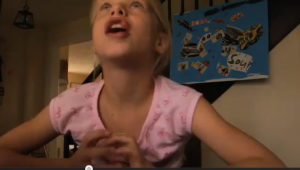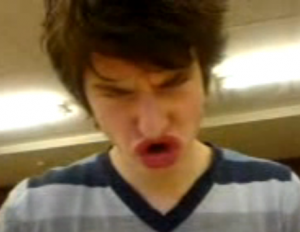The symptoms of ADHD in children should be known by each and everyone especially by individuals who have children with ADHD.
ADHD stands for Attention Deficit Hyperactivity Disorder. Attention Deficit Hyperactivity Disorder, as it name implies, is a condition wherein the child has a problem in focusing on something or an activity (having a short attention span) and may also be characterized by hyperactivity. Often times, the child feels the need to be given attention. The mood swings of a child with ADHD are often inconsistent and always vary. One moment, the child may feel happy and optimistic about something and the next minute, he/she could feel not up to it or even incompetent. Children with ADHD have problems with some parts of the brain that are responsible for controlling one’s attention and activity.
It is important to know the different symptoms of ADHD in children so that the parents would know when to seek professional help for the benefit of their child.
Different Symptoms of ADHD in Children
The symptoms of ADHD in children are categorized into three major classifications: hyperactivity, impulsivity and inattention. It’s important to delve into each one:
• Hyperactivity – The hyperactivity of the child with ADHD is characterized by his/her urge to be too active at all times. Often, the child would be restless and fidgety. For example, his/her teacher would ask her/him to sit on one corner and the child would still transfer to another seat because he/she feels the need to move around. During playtime, the child often wants to be a part of a crowd and so he/she would go to extreme efforts to fit in and even act silly. The other children would feel that the child with ADHD is too much for them to handle, so often times, the child with ADHD would be left alone and be rejected from the group. This isolation could result for the child with ADHD to get bullied or would become the bully himself/herself.
• Impulsivity – Another symptom of ADHD in children is impulsivity. The child becomes very impulsive and excited to participate in almost everything. Sometimes, the child would want to answer a teacher’s question right away before the teacher even had the chance to finish the question. The child also often interrupts a conversation or cuts in before the other person can even end his/her story. For example, as one child explains his vacation on a beach, even before he has gotten to the good parts, the child with ADHD cuts in and shares his exciting vacation somewhere else. All in all, the child with ADHD often speaks on impulse without thinking, even if his/her opinion is not asked for.
• Inattention – This is one of the most common symptoms of ADHD in children – the child has extreme problems with attention. The child with ADHD has a very short attention span and could not focus on only one thing. When a person talks to a child with ADHD, the child would obviously be not listening as another thing catches his/her attention. In other words, the child is easily distracted by some other things and would have a trouble concentrating on the words that are being said. A child with ADHD often has a problem with finishing an assignment or a task given by his/her teacher. He/she also has a difficulty in remembering even simple rules to be followed such as when he/she goes out to play.
Patient and consistent observation and attention must be given to children who possibly might have ADHD. These symptoms should be present for at least six months to confirm that the child indeed has ADHD. To confirm this diagnosis, one must seek help from the professionals on the medical field. It is important to ask for help because this condition could greatly damage or cause a significant impact on his studies and his life in general.
Effects of ADHD in Children
The symptoms of ADHD in Children would say a lot on the effects of ADHD. Because of his/her hyperactivity, the child would be left out of the crowd. This would greatly result in low self esteem. Sometimes, the child would feel down and lets other children bully him/her; the child with ADHD would often feel sorry for himself/herself. Sometimes, the child with ADHD tends to bully other people to compensate for being rejected from a group. Meanwhile, the child’s impulsiveness would also result to the feeling of rejection which would lead him/her to become depressed. The child with ADHD would often feel as if he/she is not enough for anyone. And for inattention that would cause the child to forget little things because of the lack of focus, the child would often feel that he/she is stupid. The symptoms of ADHD in children should be observed because from these symptoms, the parents should learn to adjust to understand their child better in order to help him/her in the best way possible.
Treatment of ADHD in Children
There are medications prescribed in order to help alleviate the condition of the child with ADHD. Examples of these drugs include Methylphenidate, Amphetamine and Atomoxetine. These medications would help the child with ADHD keep their focus and concentration on things and tasks. The doctor is the best person to ask for the best treatment possible and the parent should take note on when to let their child take these medicines. The best help of all is the love and understanding of the parents and loved ones of the child with ADHD. Constant encouragement and assurance should be given and the family should exert lots of efforts to make the child with ADHD feel that he/she is adequate and competent.
The symptoms of ADHD in children can be observed in lots of children out there. However, one needs to be careful with his/her assumptions; in fact assumptions must be avoided. It should be kept in mind that the symptoms should be present for at least six months. Discussing with the doctor about the different observations should be done and the settings and situations should also be considered.

